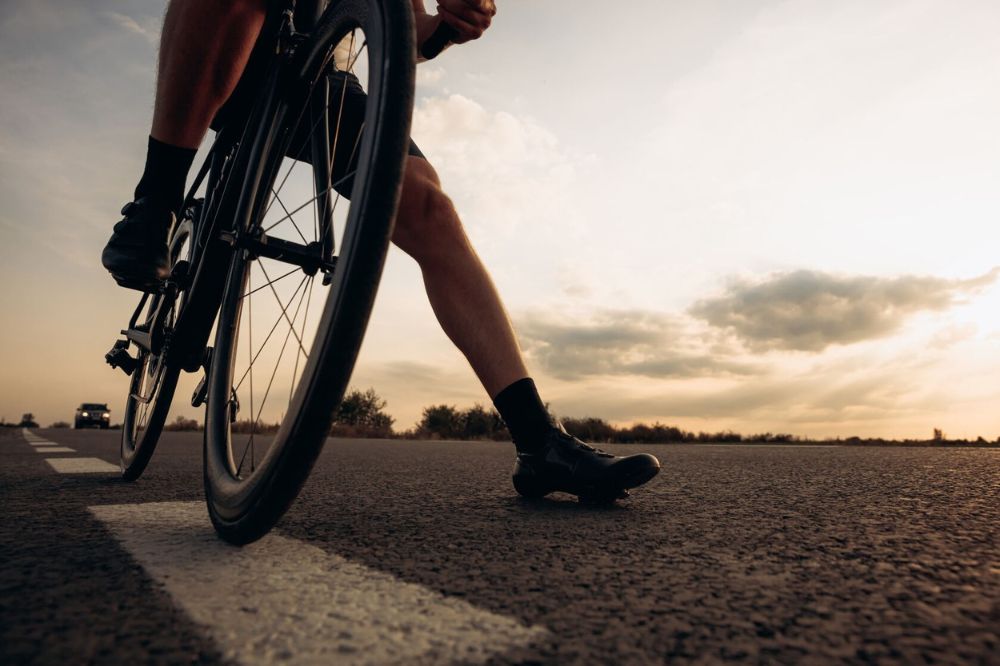Of course, once this process gets underway, it starts an unpleasant cycle (excuse the pun) that increases pressure inside the shoes, which, in turn, compresses nerves. The ultimate result is a burning sensation in the ball of the foot and tingling or numb toes. In some cases, the issue can also develop into more severe conditions like Morton’s neuroma, so paying attention when your body acts up is essential. As such, let’s take some time to dig into the symptoms of the hot foot and what cyclists can do to protect themselves while staying comfortable.
What is going on in my foot to make it hot?
As detailed by the Blackberry Sports Injury Clinic,
“The hot, burning sensation, numbness, and pain originate from the nerves supplying the toes. The nerves have to travel through a narrow space between the metatarsals (foot bones) and metatarsal heads (the foot’s ‘knuckles,’ or ball of the foot), which is where you most often position your cleats. A combination of pressure and compression of the nerves in one or both feet triggers the symptoms. In addition, wearing inflexible shoes in which your feet swell (compressing the nerves further) complicates matters more. The longer and hotter the ride, the worse it usually is.
Suppose the symptoms are confined to one foot, and pain persists outside of cycling. In that case, it’s very occasionally due to a ‘Morton’s neuroma’ – a benign swelling around one of the plantar nerves that get painfully compressed between the metatarsal heads. Morton’s neuroma involves a thickening of the tissue around one of the nerves leading to your toes. This can cause a sharp, burning pain in the ball of your foot. You may have stinging, burning or numbness in the affected toes.”
How do I make the pain and burning go away?
So on to the important part—getting rid of that unpleasant (and potentially dangerous) sensation. Simply put, the solution generally has to do with giving the nerves in your feet more space or relieving pressure over the ball of the foot.
In more severe cases, including instances of Morton’s neuroma, specific treatments or a combination of several—including anti-inflammatory pain medication, steroid injection, insoles for everyday shoes, and occasionally an excision—are needed to fix the problem.
*A note on your post-ride routine
Following a ride, you can definitely take some steps to help keep your feet healthy and thank them for their hard work! For example, icing your feet or rolling the sole over a frozen water bottle can help your feet recover faster. In addition, gentle massage with your hands or a tennis ball can ease discomfort, improve circulation, and reduce swelling. Most importantly, though, it is crucial to have a foot-smart setup when you head out to ride in the first place.

How to set yourself up for healthy and happy feet
1. Give them some room to breathe
As stated above, the number one thing to do is to get pressure off the nerves. Opting for wider shoes with a roomier front end will prevent your feet from being pushed together and the nerves from being pinched. Loosening straps or removing them for a few minutes when you stop to break can help you avoid the problem.
Be mindful that in most three-strapped road shoes, it’s primarily the top one nearest your ankle that provides the most security during pedalling. You can keep it snug because it has the most negligible effect on forefoot pressure. The lower straps, meanwhile, can be loosened significantly without having a detrimental effect on your pedalling efficiency.
2. Inspect your insoles
Suppose you’ve been able to wear your shoes comfortably for a while but suddenly notice foot pain. In that case, you should check your current insole to determine that there are no irregularities, such as cleat bolt holes pressing into the foot and causing discomfort.
In the problem persists, though, there are specifically-shaped shoe insoles designed to help. Look for a product with a ‘metatarsal button’ – this is a small raised area just behind the ball of the foot that spreads the metatarsal heads apart and relieves pressure on the nerves. Note that quality insoles also offer added cushioning to reduce stress on the nerves.
If you’re already suffering and on a tour, you can also adapt foam or moleskin products found at your local pharmacy to stand in for a metatarsal button. Just remember that the insole build-up goes in the centre, just behind the metatarsal heads in the depression adjacent to the ball of the foot.
3. Choose the right socks
It might seem evident that thinner socks would help relieve pressure but every foot is different and has different needs. For example, lean, bony feet might actually require thicker socks for padding the ball of the foot, while larger feet may benefit from thinner socks that take up less space. Additionally, thermoregulating socks may also assist in avoiding any hot-foot symptoms.
4. Pedal smarter, not harder
If you’ve tried the above solutions and are still experiencing the hot foot, it can be worth experimenting with different pedal platforms. For example, switching out your current setup to a larger platform will allow the pressure to be distributed more evenly across your feet. Note that recessed mountain biking, commuting, and cleat combinations can be especially bad over longer distances. Switching to a dedicated road cleat and pedal set-up will be more comfortable for longer road rides.
5. When it doubt, consult your doctor
As always, the information we provide is intended as useful, yet general, guidance. If you’re suffering from serious pain or persistent hot foot symptoms, there is no substitute for an assessment from a qualified medical specialist. As stated above, burning or tingling can be indicative of something more serious, so don’t hesitate to visit your doctor if the pain in your feet is preventing you from enjoying your time in the saddle!




